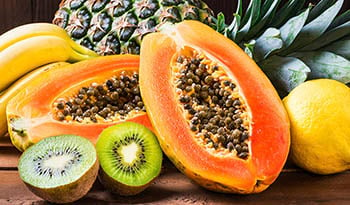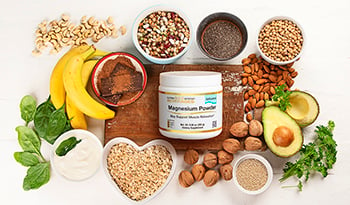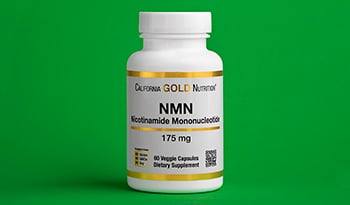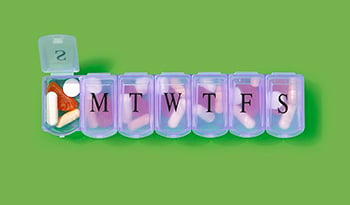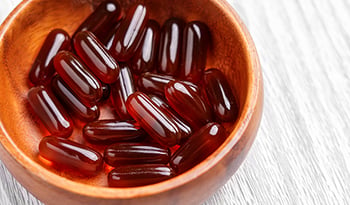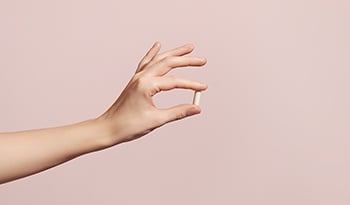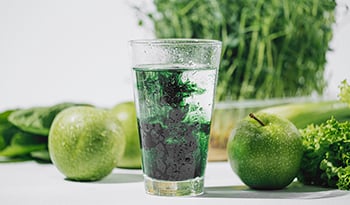What Is Bladderwrack? 3 Healthful Benefits According to a Naturopath
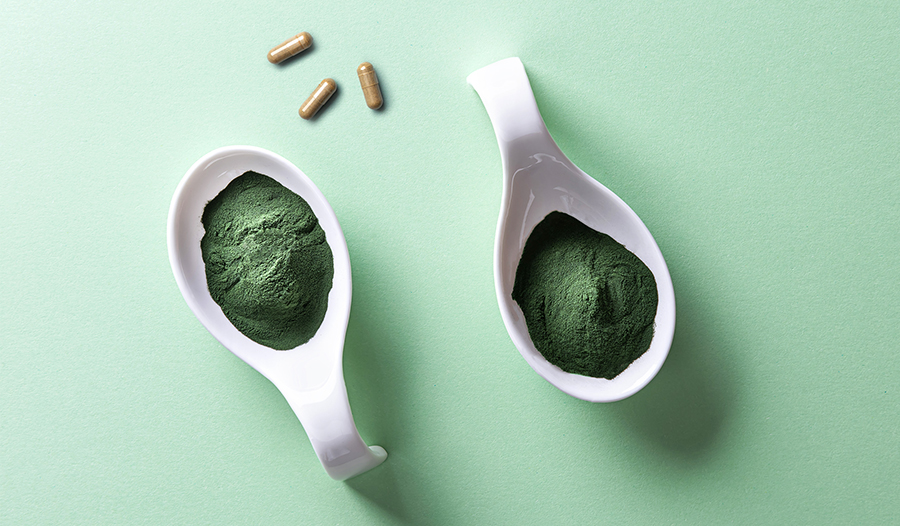
What is Bladderwrack?
Bladderwrack is a sea algae/seaweed found in the Atlantic Ocean and Baltic Sea. It can be consumed as a food product and is used as an iodine and mineral supplement worldwide. We’ll review the evidence for the use of bladderwrack below.
Characteristics of Bladderwrack
Bladderwrack is known by the Latin name Fucus Vesiculosus. It is also known by the names fucus, kelp, seawrack, cutweed, rockwrack, and more. It has concentrations of vitamins, minerals, lipids, amino acids, fibers, and carbohydrates that vary depending on the time of year it’s harvested. Bladderwrack harvested in the summer months has high levels of phlorotannins, for example, which give the seaweed its brown color and some of its antioxidant properties. Bladderwrack algae harvested in winter has higher levels of lipids, carotenoids, and chlorophyll.
Because bladderwrack can be harvested easily, it is an accessible food-as-medicine that is frequently consumed in areas close to the Atlantic ocean. It should be noted that seaweeds are part of many traditional diets and have a wide variety of uses.
Health Benefits of Bladderwrack
Bladderwrack’s phlorotannins have demonstrated antiviral, antitumor, antidiabetic, antiplatelet, and antioxidant functions. Additionally, this seaweed contains large amounts of minerals that are used to treat thyroid disorders. Bladderwrack also contains mucilaginous carbohydrates, which can nourish skin and the gastrointestinal tract.
1. Bladderwrack for Thyroid
Bladderwrack contains significant amounts of iodine, a mineral that is required for the creation of thyroid hormone. Deficiencies of iodine can result in hypothyroidism and thyroid goiter, which causes symptoms of fatigue, weight gain, hair loss, impaired metabolism and immunity, and more.
In some areas of the world, iodine deficiency in the soil and in the native diet is common, and iodine supplementation is required to prevent and reverse thyroid disorders. When people who are iodine deficient take a supplement with natural or artificial forms of iodine, they are often able to regain normal thyroid function and reverse the symptoms of goiter and hypothyroidism.
Before the creation of modern thyroid pharmaceuticals, bladderwrack was used medicinally to treat many cases of hypothyroidism. It can be used today to replete someone who’s deficient in this mineral, but it should be used wisely.
2. Bladderwrack for Skin
Bladderwrack is rich in antioxidants, which protect the skin from oxidative damage from the sun and the environment. Using a bladderwrack lotion or bladderwrack body butter will help to nourish your skin and protect it as you venture into the outdoors. Additionally, the alginate in bladderwrack also helps skin to heal after wounds, so it can be used to soothe itchy, irritated skin.
Bladderwrack has even been studied for its antibacterial properties, so it may be useful in keeping skin protected from infection. Bladderwrack can be used in a lotion, bladderwrack soap, body wash, and more. It’s a great, sustainable way to incorporate this medicinal plant into your everyday routine.
3. Bladderwrack for Digestion
Bladderwrack is between 4-59% fiber, which means it’s great for your digestion. If you can consume it as a food or seaweed snack, it will help you meet your mineral and fiber goals while delivering a salty, satisfying crunch.
How to Choose a Bladderwrack Supplement
Not all seaweeds contain the same amount of iodine, and the amount of iodine in each batch of bladderwrack will differ, which can make it difficult to use the supplemental or raw forms of bladderwrack as medicine. Luckily, many bladderwrack supplements list the amount of iodine in milligrams on the label. Choose a supplement that lists the amount of iodine it contains if you plan to use this to replete an iodine deficiency.
It’s worth noting that you shouldn’t assume you have an iodine deficiency, but rather ask your doctor to test you for it and track your levels as you go through the repletion process. The best way to test for levels of iodine is to measure the amount of iodine in the urine.
How Much Iodine Should You Take?
The recommended daily intake of iodine is about 100-300mcg for an adult. Taking more of this can cause health issues and may aggravate hyperthyroidism. If you don’t tend to use iodized salt or eat seaweed or seafood regularly, then you could be deficient. Ask your doctor to check your levels, then develop a plan to meet your iodine needs with a combination of food and supplementation.
Cautions with Bladderwrack Taken Orally
Bladderwrack has anti-platelet activity, which can interfere with the blood clotting process. If you take Warfarin or Coumadin, don’t take bladderwrack since it will alter the activity of these drugs and put you at risk for side effects. If you have hyperthyroidism, the iodine in bladderwrack can make your condition worse and interfere with your medications, so don’t take it. If you’re scheduled for surgery, you should avoid bladderwrack for at least two weeks before surgery so that you don’t run the risk of excessive bleeding.
As you can see, bladderwrack is an incredible plant with a variety of uses. Try some in your skincare products or ask your doctor about the benefits of taking it as a supplement.
References:
- “BLADDERWRACK: Overview, Uses, Side Effects, Precautions, Interactions, Dosing and Reviews.” Webmd.com, 2011, www.webmd.com/vitamins/ai/ingredientmono-726/bladderwrack. Accessed 21 July 2021.
- Derosa, Giuseppe, et al. “Ascophyllum NodosumandFucus Vesiculosuson Glycemic Status and on Endothelial Damage Markers in Dysglicemic Patients.” Phytotherapy Research, vol. 33, no. 3, 3 Feb. 2019, pp. 791–797, pubmed.ncbi.nlm.nih.gov/30714233/, 10.1002/ptr.6272. Accessed 20 July 2021.
- “Fucus Vesiculosus: MedlinePlus Supplements.” Medlineplus.gov, June 2021, medlineplus.gov/druginfo/natural/726.html. Accessed 20 July 2021.
- Heavisides, Edwin, et al. “Seasonal Variations in the Metabolome and Bioactivity Profile of Fucus Vesiculosus Extracted by an Optimised, Pressurised Liquid Extraction Protocol.” Marine Drugs, vol. 16, no. 12, 13 Dec. 2018, p. 503, www.ncbi.nlm.nih.gov/pmc/articles/PMC6315544/, 10.3390/md16120503. Accessed 20 July 2021.
- Higgins Hoare, Annabel, et al. “The Screening and Evaluation of Fucus Serratus and Fucus Vesiculosus Extracts against Current Strains of MRSA Isolated from a Clinical Hospital Setting.” Scientific Reports, vol. 9, no. 1, 29 Nov. 2019, www.ncbi.nlm.nih.gov/pmc/articles/PMC6884646/, 10.1038/s41598-019-54326-4. Accessed 21 July 2021.
- Mathew, Lata, et al. “Preclinical Evaluation of Safety of Fucoidan Extracts from Undaria Pinnatifida and Fucus Vesiculosus for Use in Cancer Treatment.” Integrative Cancer Therapies, vol. 16, no. 4, 21 Dec. 2016, pp. 572–584, www.ncbi.nlm.nih.gov/pmc/articles/PMC5739145/, 10.1177/1534735416680744. Accessed 20 July 2021.
- “Office of Dietary Supplements - Iodine.” Nih.gov, 2017, ods.od.nih.gov/factsheets/Iodine-HealthProfessional/. Accessed 21 July 2021.
DISCLAIMER:This Wellness Hub does not intend to provide diagnosis...
























































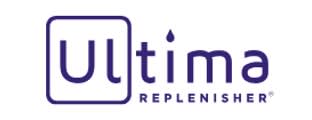




















 Table of Contents
Table of Contents



